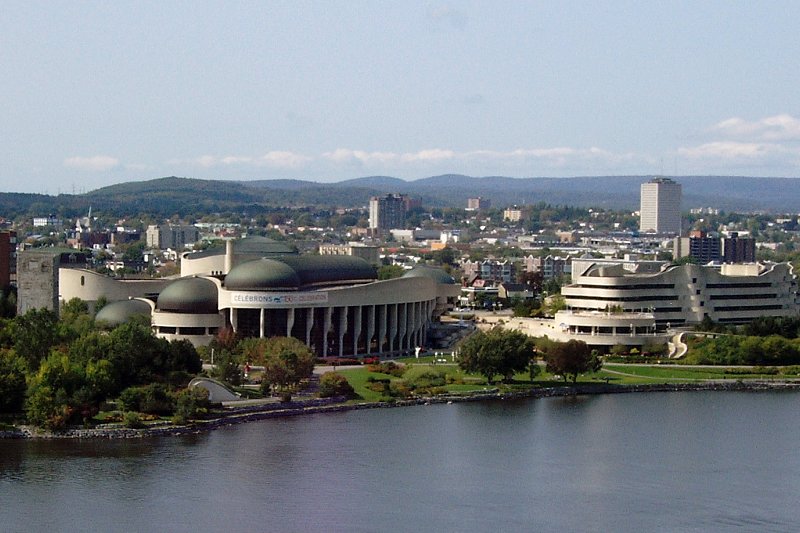 Gatineau, Quebec, Canada
Gatineau, Quebec, CanadaSource: https://commons.wikimedia.org/wiki/File:Pano_Gatineau.JPG
Author: Rxcanadensis

Gatineau is the fourth most populous city in Quebec. It spans over 342.21 sq km (132.13 sq mi) and has a population of 265,000 people (2012). The Gatineau metropolitan area has a population of 1.2 million people.
Gatineau is located on the northern banks of the Ottawa River, right across from the national capital, Ottawa. The two cities comprise a single census metropolitan area and form the National Capital Region of Canada.
Gatineau was founded in 1800 by Philemon Wright as a portage to bypass the Chaudière Falls located to the west, upstread from where the Gatineau and Rideau Rivers enter the Ottawa River. Wright established a timber trading settlement in the area, calling it Wrightstown. The city changed names a number of times, to Hull for much of its history, and finally in 2002, to the City of Gatineau.
Today Hull is the central and oldest neighborhood of the City of Gatineau, while the name Gatineau itself is commonly used to refer to the mostly suburban section on the eastern part of the Gatineau River. In the early 19th century, Hull was a predominantly English-speaking town, but over the course of the century, it became more French speaking as French Canadians moved in, raising the French Canadian portion of the population from 10% in 1850 to 90% in 1920. Today, 80% of Gatineau's population regard French as their mother tongue compared to 13.9% having English as mother tongue.
Visiting Gatineau
The Macdonald-Cartier International Airport in Ottawa is the main airport in the area. It receives flights from all major cities in Canada, as well as international flights from Frankfurt and London, among others.Places of Interest in Gatineau
- Alexandra Bridge
- Canadian Museum of Civilization
- Casino du Lac Leamy
- Gatineau Park
- Maison du Citoyen
- Promenade du Portage
 Latest updates on Penang Travel Tips
Latest updates on Penang Travel Tips

Copyright © 2003-2025 Timothy Tye. All Rights Reserved.

 Go Back
Go Back